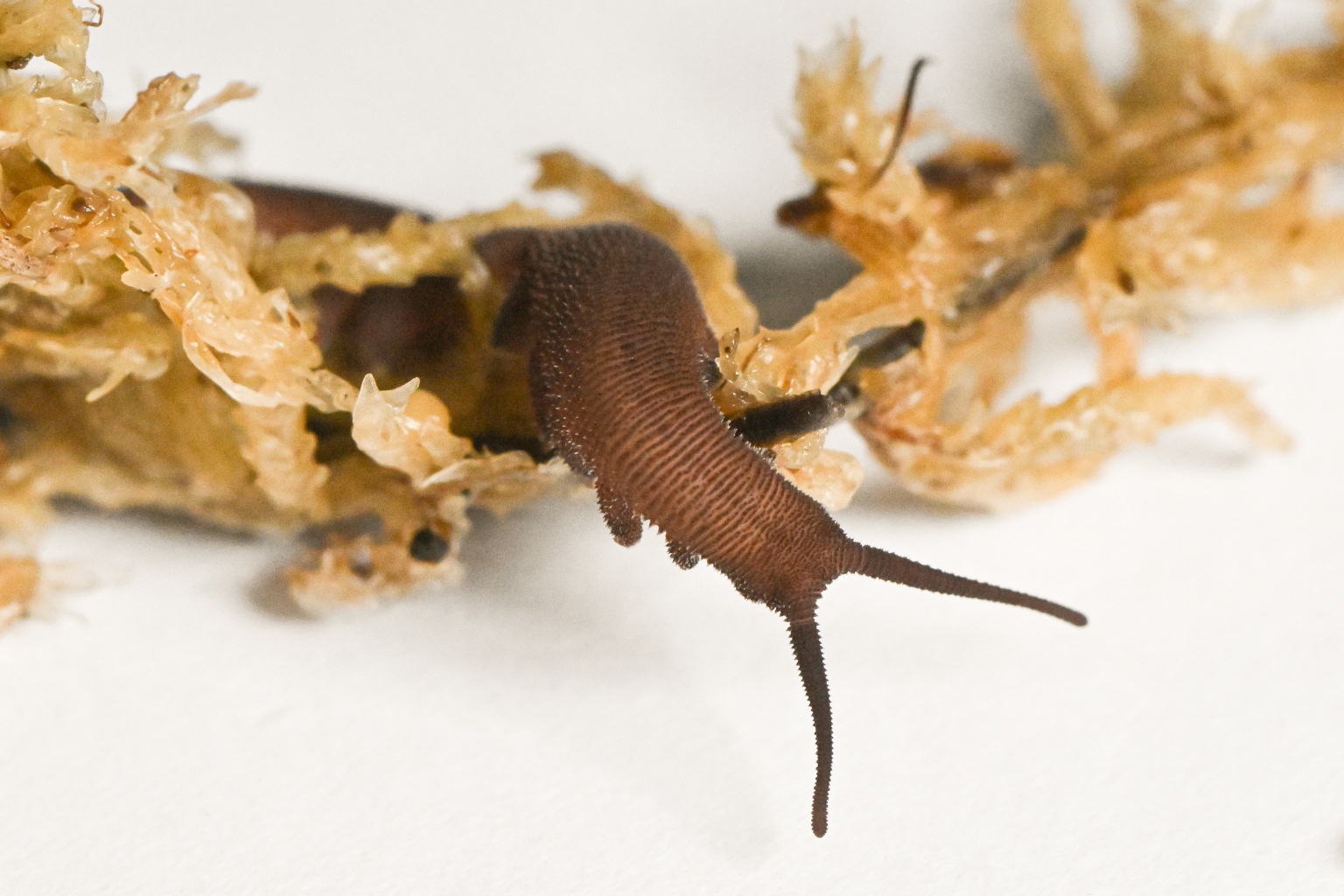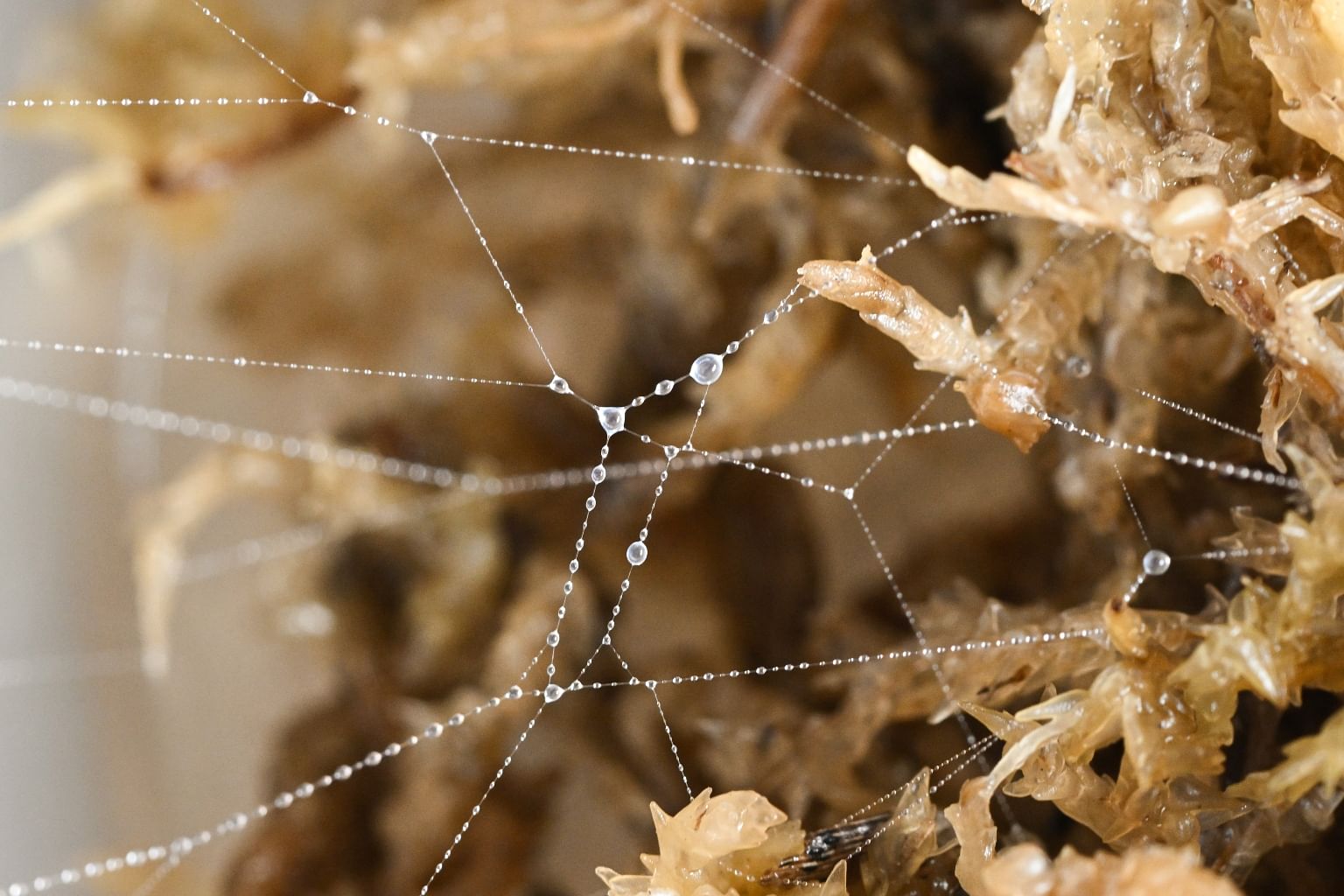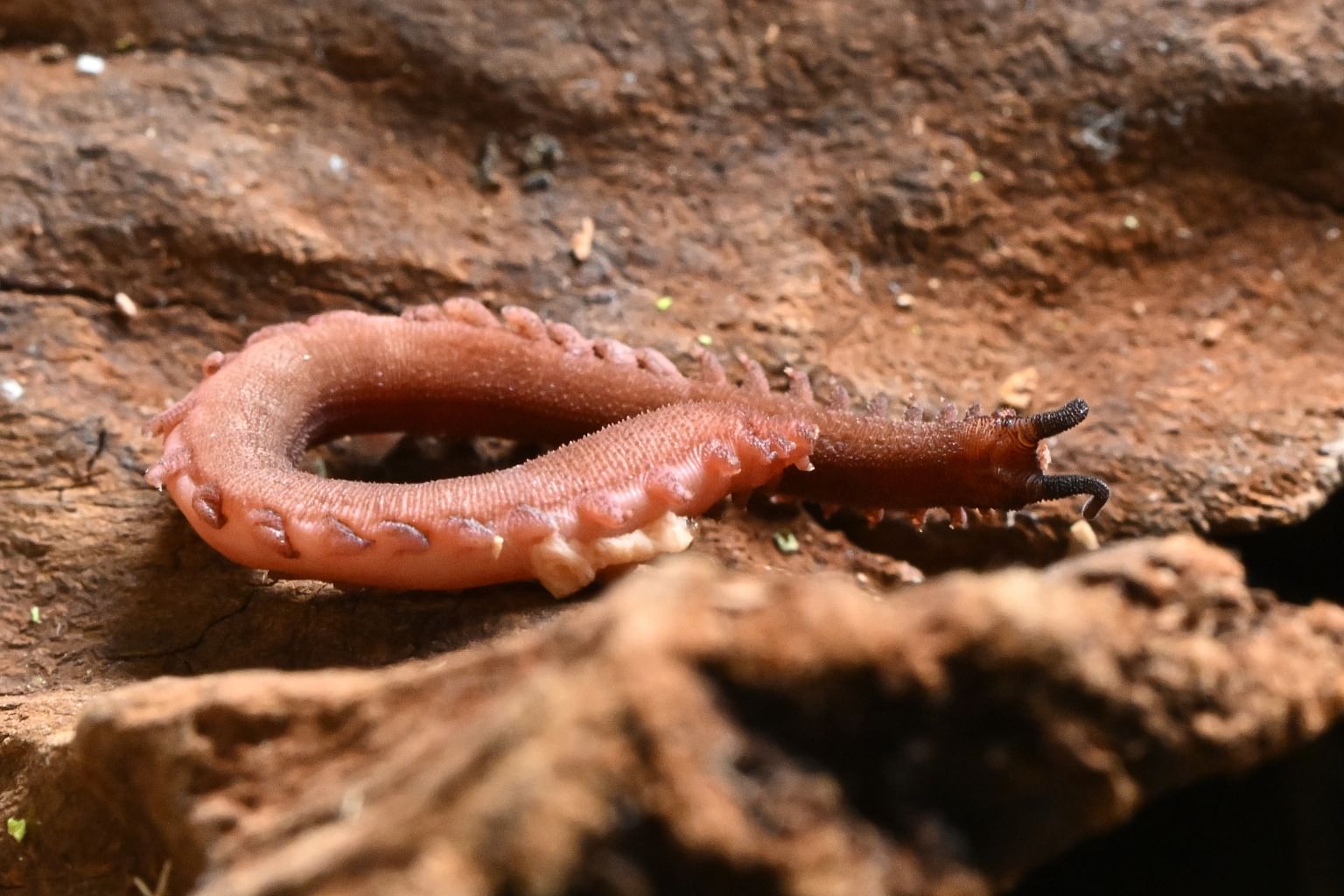Velvet worm proteins sequenced at last: One step closer to becoming a bioplastic
Sign up now: Get ST's newsletters delivered to your inbox

The velvet worm of the Phylum Onychophora and Genus Eoperipatus.
ST PHOTO: LIM YAOHUI
Follow topic:
SINGAPORE - Velvet worms are the carnivorous cowboys of the invertebrate world, using slime "ammunition" to catch prey.
This sticky substance, touted as a possible plastic replacement, is squirted out of two "muskets" from the sides of the worm's mouth.
It is famed for its ability to harden to trap prey in a string-like web as strong as nylon, and also dissolve completely when exposed to water.
The exact composition of the slime has so far eluded scientists, but a team of scientists from Nanyang Technological University (NTU) have just uncovered the exact constitution of proteins in the slime.
This brings the slime from the endangered worm a step closer towards having commercial viability as a biodegradable plastic or adhesive.
The supervisor of the study, Professor Ali Miserez, from NTU's School of Material Sciences and Engineering (MSE) and School of Biological Sciences, said though it was known "a long time ago that the slime was mostly made of proteins, no one knew the complete sequence of amino acids of the proteins".
Amino acids are the basic building blocks of proteins. There are 20 different amino acids in total, all with different chemical compositions and capable of different types of chemical reactions.
Furthermore, he added, it was understood that the hardening mechanism behind the slime was caused by the sudden assembly of many different slime proteins into a larger complex, known as a biopolymer, under certain conditions.
Biopolymers can be thought of as elongated molecules that can be made of proteins or other types of large molecules such as cellulose, the main building block of wood.
Listing common biopolymers like silk and spider webs, which have attracted much public interest, Prof Miserez said: "But these (slime proteins) are special in that they will form bonds with each other to make the slime solid but not strong enough such that we cannot dissolve it afterwards."
He added that charting the exact sequence of amino acids in these polypeptides would therefore allow them to study how exactly these proteins interact with one another to give rise to the slime's unique qualities.

As part of the sequencing research, one of the first authors of the study, NTU scientist Bhargy Sharma from MSE, discovered that a short section of one protein contributed to the slime forming tiny droplets, like oil in water. This section, known as the N-Terminus, or the extremity of a protein, was instrumental in enabling the proteins to form the droplets surrounded by water.
These droplets are like "islands" of concentrated amounts of proteins that make the slime very viscous but not solid, so that it can be stored by the animal in its body before ejection.
Prof Miserez said this discovery would not have been possible if they did not have the complete amino acid sequence.
Funded by the Singapore Energy Centre (SgEC) the study supervised by Prof Miserez’s team and conducted primarily by Dr Bhargy and Dr Yang Lu, who has since left NTU, was published in May in Advanced Science - one of the top multidisciplinary scientific journals in the world.
SgEC is a consortium founded by the NTU, the National University of Singapore, and founding members such as ExxonMobil.
While the team recognise their achievement, they acknowledge that this research is still far away from being incorporated into a consumable product.
It is estimated that around five more years of work will be required before an artificial version of the slime can be manufactured for larger scale.
Further proof-of-concept experiments will then have to be done on the artificial slime before it is ready for commercial use.
Despite this, Prof Miserez stresses that fundamental research is essential.
"Many research studies actually begin with very basic and fundamental aims, with scientists not being able to predict whether their research will eventually be used in life-changing creations," he said.
One life-changing invention that Prof Miserez's team recently developed was a novel method of delivering drugs into human cells using large biological molecules, by first encasing them in a protein-based micro droplet.
The method, which was published earlier this year in the journal Nature Chemistry, would be safer, faster and more effective than traditional drug delivery methods. It would also be more suited for more invasive drug therapies, like genetic therapy, cancer treatment and vaccinations.

However, what is lesser known is that this discovery was directly inspired by a protein from the beak of squids, said Prof Miserez.
The squid beak is a very hard material, but unlike vertebrates' teeth (like human teeth), it is not calcified but a combination of proteins and chitin, another type of biopolymer, as discovered by a team of scientists led by Prof Miserez in 2008.
Later, in 2015, the team were able to sequence the main proteins of the beak and then discovered that shorter segments of the proteins can form micro droplets that may be used for delivery of drugs into human cells.
Citing the example of the squid beak protein, Prof Miserez said: "I had no idea that I would use this discovery eventually to deliver vaccines or anti-cancer drugs."
He added: "Research is an ongoing process that never stops: For every question answered, there will be two more questions that arise, unanswered."
Returning to the velvet worm's slime proteins, he said: "Maybe with these proteins, we will have something similar one day or another application we may have never thought of in the first place."
"It is not impossible," he added.

